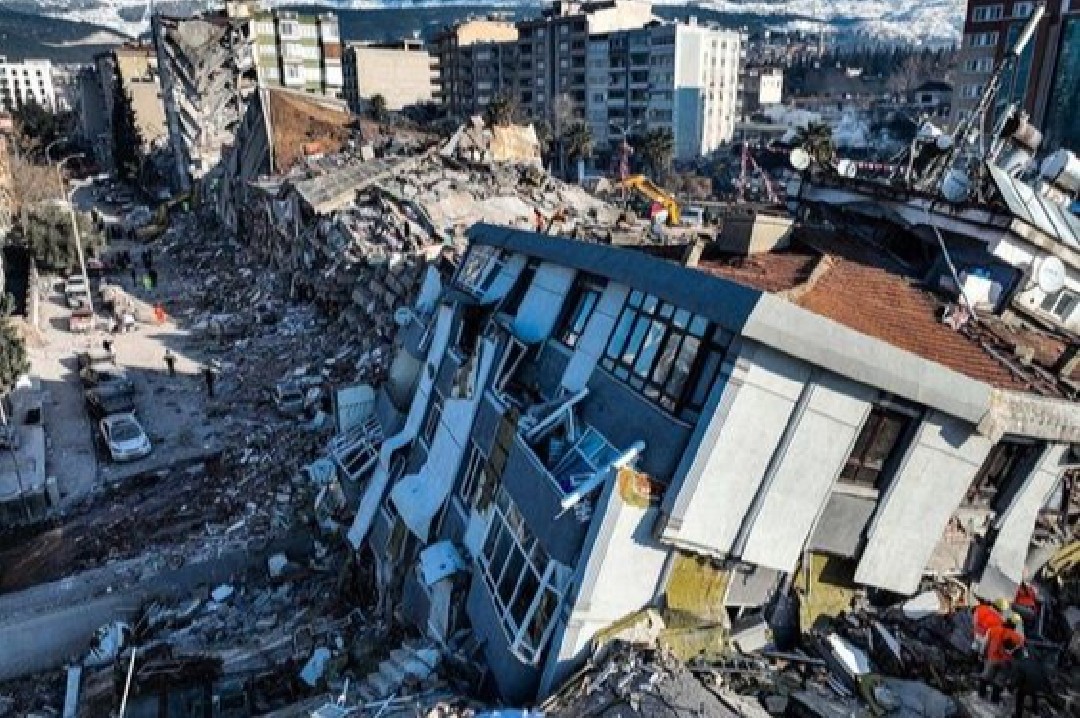How to Build an Earthquake-Resistant House: Key Steps and Latest Technology

Introduction
Earthquakes, with all their power, can change lives and environments in an instant. In earthquake-prone areas, such as the Pacific Ring of Fire, understanding this risk is key to ensuring survival and protecting property. Homes, which we identify with safety and comfort, are not immune to this threat. Building earthquake-resistant homes is not just an option but a necessity that cannot be ignored.
When earthquakes occur, the risk to life and property becomes very real. Most earthquake casualties are not caused by the force of the shaking itself but by the damage to buildings that cannot withstand the extraordinary forces generated. Therefore, preventive measures in planning and constructing homes become vital. In this article, we will explore five important aspects of building earthquake-resistant homes, starting from selecting a safe location to implementing the latest technology in structural design. With a deep understanding of risks and appropriate solutions, we can ensure that our homes become true shelters in the face of earthquake threats.
Selecting a Safe Location
Choosing a safe location is the primary foundation in building earthquake-resistant homes. The first thing to consider is the natural risks around the location. Areas with a history of landslides, steep slopes, or flood plains should be avoided as they have a higher risk level in facing earthquakes. Consulting with geologists or local environmental experts is an important step to thoroughly evaluate these risks. Information provided by experts can help determine whether the location is suitable for building earthquake-resistant homes.

Furthermore, selecting the appropriate foundation is also a crucial part of choosing a safe location. Pile foundations or reinforced foundations are commonly used options to ensure structural stability in facing earthquakes. These foundations can evenly distribute the building's load to the soil beneath, thus reducing the likelihood of damage from earthquake shaking. By seriously considering both of these factors, selecting a safe location can be a crucial initial step in building earthquake-resistant homes.
Using Earthquake-Resistant Construction Materials

The chosen construction materials have a significant impact on a home's resilience to earthquakes. Reinforced concrete and reinforced steel are two commonly used materials due to their high strength and elasticity. Reinforced concrete, with a combination of strong concrete and flexible steel, can withstand shear forces generated by earthquakes better than other materials. The same applies to reinforced steel, which has similar properties but with advantages in its ability to withstand compression and tension.

In addition to conventional materials, construction technology has introduced new innovations such as fiber-reinforced concrete. Fiber-reinforced concrete combines the strength of concrete with synthetic or metallic fibers, providing additional elasticity and earthquake resistance. This material is also lighter and easier to apply, making it an attractive choice for building earthquake-resistant homes. By selecting the right construction materials, you can ensure that your home has optimal resistance to earthquake shaking, providing maximum protection for you and your family.
Efficient Structural Design

Efficient structural design is key to ensuring a home's resilience to earthquakes. Architects and structural engineers must work together carefully to design buildings with proper load distribution. This involves a thorough analysis of the strengths and weaknesses of each structural element, as well as mapping out weak points vulnerable to earthquake damage. By paying attention to even load distribution, the building structure can more effectively withstand external forces generated by earthquakes.
Furthermore, designs integrating steel or reinforced concrete frame systems with load-bearing walls are commonly used solutions in building earthquake-resistant homes. These systems provide additional strength to the building structure, thereby enhancing its ability to withstand earthquake shaking. The use of appropriate construction materials and technology in structural design will result in a more stable and safe home in facing earthquake threats. Thus, efficient structural design is an important step in building earthquake-resistant homes.
Implementation of Earthquake Protection Systems
In addition to foundation, materials, and structural design factors, the use of earthquake protection systems is an important step in ensuring a home's resilience to earthquake shaking. One commonly used system is earthquake isolators, made of elastomeric or metallic materials. These isolators are installed between the building structure and the foundation, allowing the building to move relative to the ground shaking during earthquakes. Thus, earthquake isolators can significantly reduce the forces received by the building, thereby reducing the risk of structural damage and injuries to occupants.
In addition to earthquake isolators, vibration dampers can also be used to reduce the impact of earthquake shaking. Vibration dampers work by absorbing and dissipating the vibration energy generated by earthquakes, thereby reducing the forces experienced by the building structure. The use of this technology can provide additional protection against earthquake damage and injuries.
By implementing these earthquake protection systems, we can take proactive steps to enhance the resilience of buildings to earthquake shaking. While it is not possible to completely avoid earthquakes, the use of this technology can help minimize damage and injury risks to buildings and their occupants. As a result, homes equipped with earthquake protection systems can become safer and more comfortable places for their occupants to face earthquake threats.
Community Training and Awareness

In addition to technical factors directly related to building construction, it is also important to pay attention to community training and awareness efforts in building earthquake-resistant homes. Training on emergency evacuation procedures is crucial in dealing with earthquake emergencies. Communities need to be trained to identify safe shelter locations and to respond quickly in the event of an earthquake. Knowledge of how to act appropriately and efficiently can save many lives and prevent unnecessary injuries in such emergency situations.
Furthermore, awareness of the importance of having the right safety equipment is also essential. This includes having emergency evacuation kits containing essential items such as food, water, clothing, medications, as well as communication and lighting tools. With adequate preparation, communities can be better prepared to face earthquakes and minimize their impact on themselves and others around them.
Moreover, education on safe construction practices should also be emphasized to builders and homeowners. They need to understand the importance of adhering to established construction standards to ensure that homes are built correctly and in accordance with safety regulations. With increasing awareness of the importance of strict construction standards, we can ensure that homes built in earthquake-prone areas have optimal resilience to this threat.
Conclusion
Building earthquake-resistant homes involves a comprehensive series of steps, from selecting a safe location to implementing earthquake protection systems. By considering these aspects and using the latest technology in construction, we can ensure that our homes are more resistant to earthquake shaking. Furthermore, community education and awareness also play a crucial role in minimizing risks and preparing for earthquake threats.








